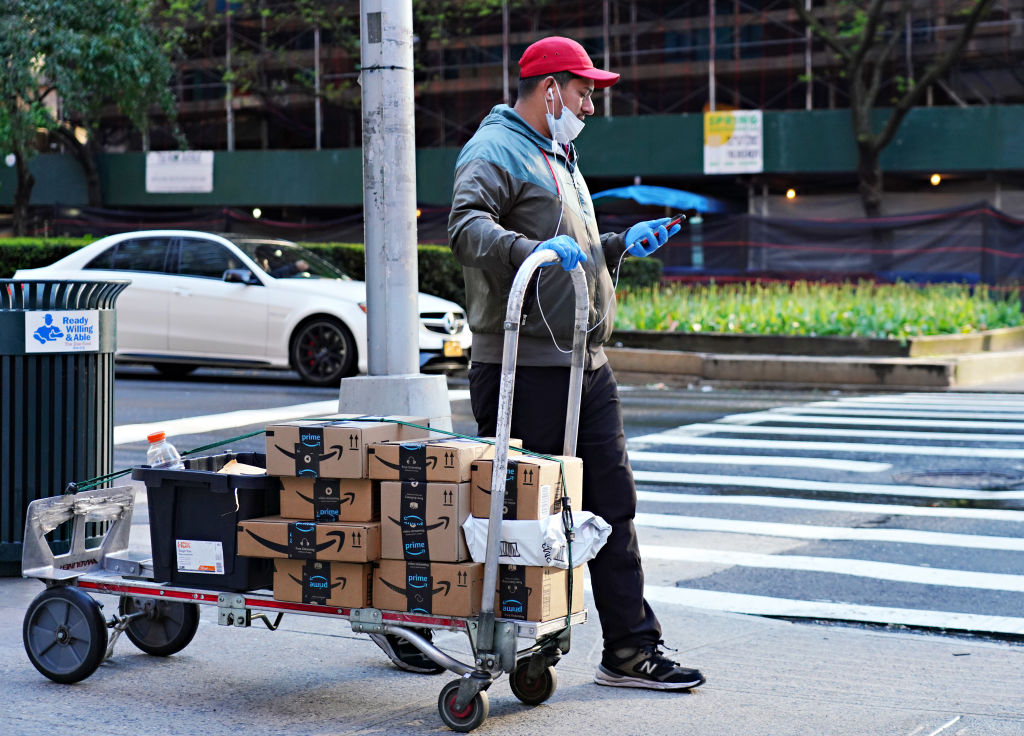Worry about contact with people, not objects, CDC advises in coronavirus guidelines


The Centers for Disease Control and Prevention prominently warns on its "How COVID-19 Spreads" page that "the virus spreads easily between people." But it also says, in new language, that "the virus does not spread easily in other ways," including "from touching surfaces or objects," The Washington Post noticed Thursday.
"It may be possible that a person can get COVID-19 by touching a surface or object that has the virus on it and then touching their own mouth, nose, or possibly their eyes," the CDC says. "This is not thought to be the main way the virus spreads, but we are still learning more about this virus." CDC spokesman Kristen Nordlund told the Post the quietly updated guidance came from an internal review and "usability testing," but did not represent a change in how the CDC describes transmission. Previous versions of the site did have similar language, the Post reports.
The coronavirus can remain potentially viable on cardboard for up to 24 hours and up to three days on plastic and metal, virologist Vincent Munster and his colleagues at the National Institute of Allergy and Infectious Diseases lab in Hamilton, Montana, found. But it usually breaks down within hours of leaving its host. "Direct contact with people has the highest likelihood of getting infected — being close to an infected person, rather than accepting a newspaper or a FedEx guy dropping off a box," Munster told the Post.
The Week
Escape your echo chamber. Get the facts behind the news, plus analysis from multiple perspectives.

Sign up for The Week's Free Newsletters
From our morning news briefing to a weekly Good News Newsletter, get the best of The Week delivered directly to your inbox.
From our morning news briefing to a weekly Good News Newsletter, get the best of The Week delivered directly to your inbox.
If not living in fear of Amazon deliveries is the good news, the bad news is people are starting to venture into public spaces again, not always observing social distancing. The U.S. is on the cusp of 100,000 COVID-19 deaths, and if just 30 percent of people return to pre-COVID life, that number will easily surpass 200,000 by the end of summer, Nina Fefferman, who models diseases at the University of Tennessee, Knoxville, tells Politico.
A free daily email with the biggest news stories of the day – and the best features from TheWeek.com
Peter has worked as a news and culture writer and editor at The Week since the site's launch in 2008. He covers politics, world affairs, religion and cultural currents. His journalism career began as a copy editor at a financial newswire and has included editorial positions at The New York Times Magazine, Facts on File, and Oregon State University.
-
 How to financially prepare for divorce
How to financially prepare for divorceThe Explainer Facing ‘irreconcilable differences’ does not have to be financially devastating
-
 Why it’s important to shop around for a mortgage and what to look for
Why it’s important to shop around for a mortgage and what to look forThe Explainer You can save big by comparing different mortgage offers
-
 4 ways to save on rising health care costs
4 ways to save on rising health care costsThe Explainer Health care expenses are part of an overall increase in the cost of living for Americans
-
 Nobody seems surprised Wagner's Prigozhin died under suspicious circumstances
Nobody seems surprised Wagner's Prigozhin died under suspicious circumstancesSpeed Read
-
 Western mountain climbers allegedly left Pakistani porter to die on K2
Western mountain climbers allegedly left Pakistani porter to die on K2Speed Read
-
 'Circular saw blades' divide controversial Rio Grande buoys installed by Texas governor
'Circular saw blades' divide controversial Rio Grande buoys installed by Texas governorSpeed Read
-
 Los Angeles city workers stage 1-day walkout over labor conditions
Los Angeles city workers stage 1-day walkout over labor conditionsSpeed Read
-
 Mega Millions jackpot climbs to an estimated $1.55 billion
Mega Millions jackpot climbs to an estimated $1.55 billionSpeed Read
-
 Bangladesh dealing with worst dengue fever outbreak on record
Bangladesh dealing with worst dengue fever outbreak on recordSpeed Read
-
 Glacial outburst flooding in Juneau destroys homes
Glacial outburst flooding in Juneau destroys homesSpeed Read
-
 Scotland seeking 'monster hunters' to search for fabled Loch Ness creature
Scotland seeking 'monster hunters' to search for fabled Loch Ness creatureSpeed Read
